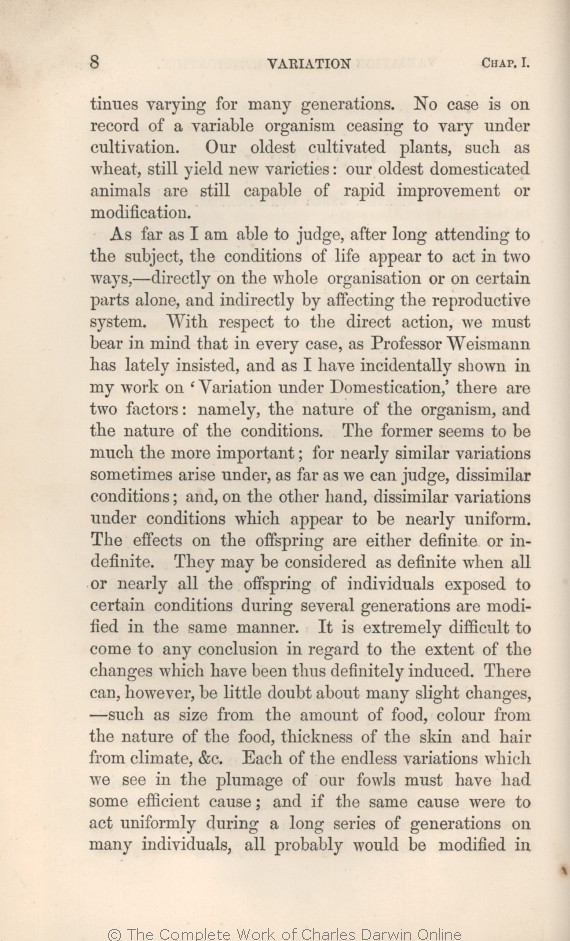vary, it generally
con- tinues | con- tinues 1869 | | continues 1859 1860 1861 1866 1872 |
| varying 1869 1872 | | to vary 1859 1860 1861 1866 |
| organism 1869 1872 | | being 1859 1860 1861 1866 |
| vary 1869 1872 | | be variable 1859 1860 1861 1866 |
| ..... 1869 1872 | | often 1859 1860 1861 1866 |
|
|
As far as I am able to judge, after long attending to the subject, the conditions of life appear to act in two ways, — directly on the whole organisation or on certain parts alone, and indirectly by affecting the reproductive system. With respect to the direct action, we must bear in mind that in every case, as Professor Weismann has lately insisted, and as I have incidentally shown in my work on 'Variation under Domestication,' there are two factors: namely, the nature of the organism, and the nature of the conditions. The former seems to be much the more important; for nearly similar variations sometimes arise under, as far as we can judge, dissimilar conditions; and, on the other hand, dissimilar variations
under | under 1869 | | arise under 1872 |
|









